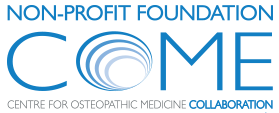19 February 2022
Sixty thousand people are diagnosed with Parkinson’s disease (PD) each year, making it the second most common neurodegenerative disorder. PD results in a variety of gait disturbances, including muscular rigidity and decreased range of motion (ROM), that increase the fall risk of those afflicted. Osteopathic manipulative treatment (OMT) emphasizes the central role of the musculoskeletal system, which could be ideal for addressing the somatic dysfunction associated with neurodegeneration in PD. The close anatomical relationship of structures implicated in PD within the skull and the increased frequency of strain patterns raise the question of whether osteopathic cranial manipulative medicine (OCMM) can improve gait performance by improving circulation to the affected nervous tissue. However, there have been few studies in recent years that explore the effects of a standardized OMT protocol on Parkinsonian gait characteristics, and there have been few studies that include OCMM techniques. This study aims to determine whether a single session of OMT or OMT + OCMM can improve the gait of individuals with PD by addressing joint restrictions in the sagittal plane and by increasing ROM in the lower limb … MORE
Effects of osteopathic manipulative treatment vs. osteopathic cranial manipulative medicine on Parkinsonian gait
No items found







